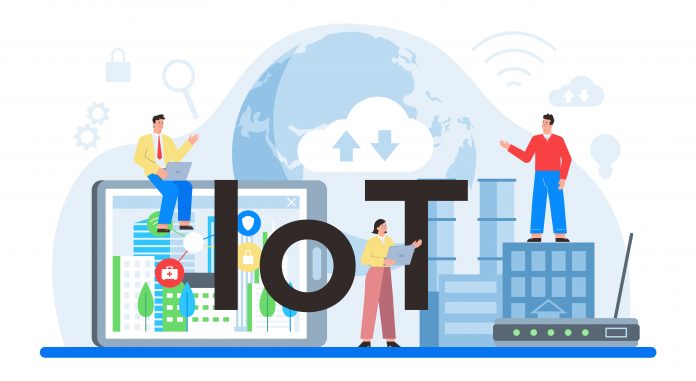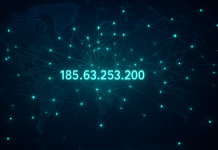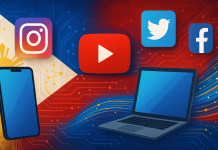It’s time to admit that traditional utility meters have become obsolete.
Traditional utility meters operate slowly while requiring human verification and provide minimal transparency about resource usage. The introduction of IoT smart metering completely transforms the utility landscape.
Utility businesses are already looking into advanced methods for tracking energy and utility usage. IoT in the utility sector has become a transformative force within the utility sector.
This post will review how IoT smart metering solutions revolutionize utility management, demonstrate practical applications of these technologies, and guide you through the key real-world use cases of IoT smart metering.
What Is IoT Smart Metering?
IoT smart metering represents the integration of smart meters with Internet of Things technology.
IoT-enabled smart meters work to collect data automatically and send this information in real time for analysis by utility providers and customers.
No more estimated bills. No more meter readers knocking on doors. Your system receives accurate data instantly.
The integration of IoT technology into smart metering systems represents a significant advancement because it enables real-time monitoring and fault detection that improves operational efficiency and customer satisfaction.
Why Is IoT a Big Deal for Smart Metering?
Here’s the big win: Smart meter IoT technology helps you oversee energy usage together with water and gas consumption in real time while enabling faster fault detection and proactive response.
IoT in the utility sector helps providers to prevent issues before they develop instead of just responding to them afterward.
This operational change leads to better operational efficiency while simultaneously increasing customer satisfaction. Who wouldn’t appreciate reduced costs along with minimized service disruptions?
Real-Time Data Means Real-Time Decisions
The main advantage of smart metering IoT technology lies in its capacity to enable quick decisions based on data analysis.
You receive immediate notifications whenever consumption reaches higher than normal levels. You can track patterns and optimize distribution. Customers receive advance notifications to prevent small problems from developing into expensive situations.
IoT-enabled smart meters deliver substantial power capabilities to businesses.
Use Cases of IoT Smart Metering
We will explore the locations where these smart meters have demonstrated significant improvements.
1. Energy Monitoring for Homes and Businesses
IoT-enabled smart meters find extensive application in residential and commercial energy settings.
Energy-hogging appliances can be identified while peak usage hours are monitored and power-saving measures are automated.
The result of these advancements leads to reduced utility costs alongside improved energy management.
Partnering with the right IoT development company ensures seamless integration and analytics that actually work for your energy goals.
2. Smart Water Metering
Smart meters equipped with IoT technology help water systems identify leaks in real time.
Real-time monitoring of pressure and flow enables utilities to take quick actions which resulting in water and cost savings.
Regions affected by drought benefit greatly from this technology because water conservation becomes critically important.
3. Gas Leak Detection
Smart metering IoT systems in gas utilities provide life-saving capabilities beyond simple usage tracking.
Advanced sensors identify pressure and flow irregularities to generate alerts about possible leaks, which stops disasters from developing.
4. Demand Forecasting
One of the underrated use cases of IoT smart metering is predictive analytics.
Utilities achieve highly accurate demand forecasts through the analysis of historical and live usage data.
Optimizing grid performance and minimizing blackouts during high-demand periods becomes possible through this approach.
5. Remote Control and Automation
Want to turn off the water remotely? Shut off a faulty gas line?
The implementation of IoT technology allows utility sector organizations to control systems at a distance.
Many small problems do not require deploying trucks for resolution. A few clicks and the problem’s handled.
How IoT Improves Customer Experience?
Customers dislike unexpected billing charges and service-related difficulties.
Through IoT-enabled smart meters, customers gain visibility into their usage patterns and can establish alerts while receiving tips to reduce expenses.
More control. Less confusion. Better satisfaction.
Smart metering IoT delivers its customer-side benefits through enhanced service management.
Challenges in Smart Metering IoT Adoption
The adoption of smart metering IoT involves multiple challenges that prevent smooth integration.
Now we should discuss some major challenges.
1. Data Security & Privacy
IoT-enabled smart meters generate continuous data streams, which create legitimate security concerns.
Encryption and protection measures must be applied to sensitive usage data. A strong cybersecurity plan is essential to defend both your network and customer information. You can rely on wireless security IoT solutions from Trafalgar Wireless for this.
2. Infrastructure Readiness
Your current systems may require updates to handle the transition.
IoT device integration requires older infrastructure to undergo necessary upgrades to function properly. And retrofitting can be time-consuming and costly.
The lasting advantages of IoT implementation commonly exceed the short-term difficulties encountered during the transition.
3. Data Overload
Extra data seems attractive until you find yourself overwhelmed by its volume.
The real-time data produced by IoT smart metering systems becomes overwhelming without proper analytics tools.
Implement dashboards and automation systems to effectively interpret data.
Let’s examine the financial returns from implementing IoT solutions in the energy sector.
Let’s talk money.
Organizations need to allocate upfront resources for IoT-enabled smart meter installation alongside staff training and systems enhancement.
You receive significant rewards through reduced outages and quicker response times, along with decreased operational costs, which lead to greater customer satisfaction.
Smart metering IoT isn’t just an upgrade. It’s a competitive advantage.
Choosing the Right IoT Development Partner
Your smart metering success depends entirely on your business relationships.
A reliable team supports your business in developing and sustaining an efficient IoT ecosystem.
Choose a service provider that delivers complete IoT App Development Services, starting with hardware integration and extending to cloud analytics and customer dashboards.
Future Trends in IoT Smart Metering
This space is evolving fast. Here’s what’s coming:
- AI-driven IoT systems enable companies to anticipate system failures before they materialize.
- Utilizing blockchain technology helps create transparent billing systems while enabling secure data sharing.
- Smart meters enabled by 5G technology provide much quicker data transmission speeds.
- Edge computing enables analytics to be performed directly at the device level, allowing for immediate decision-making.
Investing in IoT for smart meters now will enable you to take advantage of leading-edge technology trends.
Final Thoughts
IoT in the utility sector is not only for hardware deployment, but also collects detailed operational data.
Our method delivers smarter tools to simplify your tasks while optimizing operations and decreasing manual handling requirements.
IoT smart metering systems enable real-time insights that enhance operational efficiency while simultaneously improving customer experiences throughout the energy, water, and gas industries.
Real-time automated data enables you to improve decision-making speed while identifying problems early and creating utility services that respond better to needs.
These systems enable intelligent responses by providing you with actionable data.
Smart metering IoT technology ensures operational control and performance enhancement while reducing expenses both for city grid managers and single facility operators.






